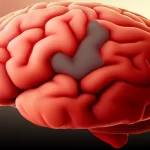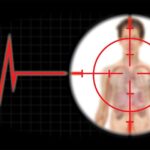‘Bad Malaria in the Good Child’ is a poem about malaria in the child.
Malaria is an infectious disease that is caused by injection of parasites called plasmodium into the body by mosquitoes.
Adults also get infected with malaria but children are particularly at risk of severe disease, with most deaths occurring in those under five years old.
This article is in two parts: First the poem proper (also presented as a video), followed by the line-by-line elaboration.
Bad Malaria in the Good Child
Malaria, so bad, so viled,
afflicts even the good child
It’s parasite, mosquito domiciled
causes symptoms sometimes wild
or so frequent it seems mild
Mosquito, the vampire craven
comes in the evening by seven
In flight and bite, a maven;
cowardly sends children to heaven,
claiming in a quarter hour, eleven
Malaria brings fever as attacks;
periodic like government tax
It may for few hours wax,
wane, but for three days max
or be at steady climax
Illness may come two fortnights
after infected mosquito bites
deposits in skin, parasites
that invade liver hepatocytes;
thence red cells, erythrocytes
the bite brings rash like a hickey
Head may hurt; tummy, colicky
eyes yellow, lids sticky
with food, the child picky
under five years, most risky
Also, diarrhea, respiratory infections,
other symptoms and manifestations,
some mimicking other conditions
like sepsis with convulsions
and side effects of medications
The child may emaciate like progeria,
sometimes with severity criteria
like hypoglycemia and anuria
With prompt drugs and ‘honoraria’,
the good child survives malaria
'Bad Malaria in the Good Child', explained
Stanza 1 (an overview of malaria)
“Malaria, so bad, so viled,” … “afflicts even the good child” (stanza 1, lines 1 & 2)
As I stated above, malaria ‘afflicts’ children as well as adults.
The most severe cases however occur in the child between 6 months and 5 years old.
“It’s parasite, mosquito domiciled” (stanza 1, line 3)
The parasite that causes malaria, called ‘plasmodium’, is introduced into the body by the mosquito. Plasmodium(plural: plasmodia) is thus aptly called malaria parasite.
There are different types of mosquitoes and they all cause different diseases, like malaria, yellow fever and dengue.
The type of mosquito that causes malaria is the ‘Anopheles’, sometimes described as ‘Anopheline’. Like other mosquitoes, the females feed on blood while the males feed on plant juice.
When the female Anopheles mosquito feeds on the blood of a person that has malaria, it becomes “infected” with malaria parasites.
An infected female Anopheles mosquito can feed on a healthy person and pass these parasites into the blood. The person then becomes sick with malaria.
“causes symptoms, sometimes wild” … “or so frequent it seems mild” (stanza 1, lines 4 & 5)
Malaria may present as ‘wild’ or ‘mild’, this depends most times on how frequently a person has been exposed to plasmodium.
Normally, the body responds to repeated attacks of malaria by developing some level of immunity(partial) to plasmodium. People with such ‘partial immunity’ can still have malaria but may not develop severe disease.
A newborn child whose mother has developed ‘partial immunity’ to malaria may ‘acquire’ protective antibodies through the placenta. This passive immunity may protect the child from malaria for the first six months of life but after this, the immunity wanes.
If the child survives repeated malaria infections to an older age, he or she would also develop immunity against malaria.
Stanza 2 (the mosquito)
“mosquito, the vampire craven” (stanza 2, line 1)
Mosquitoes feed on blood by inserting a long mouth part called ‘proboscis’, through the skin like vampires. See this article/poem, which I wrote: Secrets of the Vampire and Mosquito.
A ‘craven’ is someone who is extremely cowardly; if ‘mosquito’ were to be a person, craven would be an apt description because it causes illness and death of so many children.
“comes in the evening by seven” (stanza 2, line 2)
Most anopheles mosquitoes are ‘active from dusk till dawn (crepuscular)’; some however are active at night (nocturnal).
“In flight and bite, a maven” (stanza 2, line 3)
The mosquito is highly effective in locating food sources, with the help of well developed chemical, visual and heat sensors.
The female anopheles mosquito is also stealthy in flight and may have started feeding on you before you are aware.
Indeed, the mosquito is an expert, a maven.
“cowardly sends children to heaven” (stanza 2, line 4)
Malaria kills a child under 5 years old, every 75 seconds (Unicef); this sums up to hundreds of thousands of child deaths every year as a result of malaria and its complications.
Stanza 3 (malaria fever in the child)
People often confuse ‘fever’ with ‘malaria’.
You should note that fever is just a symptom of malaria and like other symptoms, it may or may-not be present.
Many of those that have developed ‘partial’ immunity to malaria do not present with fever at all.
“Malaria brings fever as attacks,” (stanza 3, line 1)
When present, malaria fever occurs in ‘attacks’ or ‘paroxysms’, with 3 recognizable stages:
- Each attack begins with a cold stage (feeling cold and shivering)
- followed by a fever stage (temperature up to 41°C)
- and finally a wet stage (profuse sweating as the fever subsides)
A child aged between 6 months and 5 years, having malaria with this peaking fever pattern may present with convulsions.
“periodic like government tax” (stanza 3, line 2)
After each attack, a period of time elapses before another attack.
The length of time between each ‘fever attack’ varies, depending on the specie of plasmodium that is in the blood.
- Quotidian fever: caused by Plasmodium knowlesi; fever occurs everyday.
- Benign Tertian fever: caused by Plasmodium vivax and Plasmodium ovale; fever occurs every 2nd day i.e., 48 hourly (e.g., Monday-Wednesday-Friday).
- Malignant Tertian fever: caused by Plasmodium falciparum; fever may be continuous, subsiding only briefly; it occurs every 2nd day i.e., 48 hourly (e.g., Monday-Wednesday-Friday).
- Quartan fever: caused by Plasmodium malariae; fever occurs every third day i.e., 72 hourly (e.g., Monday-Thursday-Sunday).
The periodic fever patterns coincide with the rupture of Red Blood Cells and newly ‘produced’ parasites plus a compound, hemozoin into the blood stream; for example, in P vivax and P ovale malaria, merozoites are released every 48 hours.
“It may for few hours wax;” (stanza 3, line 3)
Each fever attack typically lasts about 2 to 6 hours. Fever associated with P falciparum though is less predictable and could last much longer.
“wane, but for three days max;” (stanza 3, line 4)
From the list above, you would notice that Quartan fever pattern has the longest length of time between attacks, which is 3 days.
“or be at steady climax” (stanza 3, line 5)
Malignant Tertian fever (caused by Plasmodium falciparum) may be continuous, for more than 24 hours.
Infection with more than one plasmodium species within the same period may occur, making fever patterns unpredictable. This is called ‘mixed-species plasmodium infection’.
Note: These classic fever patterns are usually not seen in the early stages of malaria.
Stanza 4 (incubation)
“Illness may come, two fortnights” … “after infected mosquito bites” (stanza 4, lines 1 & 2)
A child (or adult) who gets bitten by infected mosquitoes, may not get ill immediately.
Most times, symptoms start to appear anytime from 7 to 30 days [two fortnights = four weeks].
The period from mosquito bite to appearance of symptoms is called ‘incubation period’.
“deposits in skin, parasites” … “that invade liver hepatocytes” … “thence red cells, erythrocytes” (stanza 4, lines 3, 4 & 5)
When the mosquito bites to feed on blood, it also deposits malaria parasites into the skin. From there, the parasites move to the liver where they multiply inside liver cells called hepatocytes.
After multiplication, the liver cells are destroyed to release more parasites that invade the Red Blood Cells (RBCs or Erythrocytes).
The parasites continue to multiply inside the RBCs. At intervals, the red cells are destroyed and a compound called ‘hemozoin’ is released alongside the freshly produced parasites.
Stanza 5 (symptoms of malaria in the child)
“The bite brings rash like a hickey” (stanza 5, line 1)
Rash at site of mosquito bites is quite common in younger children. Although it is not a symptom of malaria in itself, it occurs because the body responds to proteins in mosquito saliva that are deposited in the skin as it feeds.
The rash is usually a tiny raised itchy bump with a surrounding area of redness. This bump is called a ‘wheal’ or ‘welt’. In people of African descent, this redness may not be apparent.
Most times, the rash following a mosquito bite would have disappeared by the time the ‘incubation period’ is complete and the symptoms of malaria appear.
“Head may hurt; tummy, colicky” (stanza 5, line 2)
A child that can speak may complain that the head or tummy(abdomen) hurts; this may mean headache and abdominal pain respectively.
Headache is a common symptom of malaria, and it may affect one or both sides of the head. It may also come with pain around the eyes or neck stiffness.
Abdominal pain is also quite common in the child with malaria. It may be ‘colicky’ (like cramps), diffuse (generalized) or more localized, say the upper abdomen and may come with nausea and vomiting.
“eyes yellow, lids sticky” (stanza 5, line 3)
A child with malaria may have ‘yellow eyes’, that is the white part of the eyes (sclera) appears yellow. This is due to accumulation of a compound called bilirubin in the blood. Bilirubin is normally is released from Red Blood Cells (RBCs) whenever they are destroyed.
In malaria, there is massive destruction of RBCs, which makes bilirubin to accumulate. This accumulation also makes the skin to appear yellow.
The yellow appearance of the sclera and skin due to massive destruction of RBCs is called ‘hemolytic jaundice’.
NOTE: Yellow skin may not be apparent in people of African descent.
Also, your child may wake up with the eyes pinkish or reddish and the eye lids difficult to open in the morning as they may have been glued together by mucus.
Malaria weakens the immune system, that is, it causes immunosuppression. This may make viruses that would otherwise be latent in the body after previous exposure be reactivated. For example, Adenoviruses and Herpes Simplex Viruses(HSVs).
These viruses cause conjunctivitis (‘viral conjunctivitis’) with watery discharge from the eyes, sometimes with mucus(especially when there is additional bacterial infection), as well as crustiness around the eyelids upon waking in the morning; HSVs more so in one eye.
“with food, the child picky” (stanza 5, line 4)
‘Loss of appetite’, also called anorexia is a characteristic feature of malaria. A child may be selective or “picky” with food and drinks, including refusal to breastfeed.
Older children could complain of having bitter taste or that food is tasteless.
Oral ulcers, nausea and vomiting could also contribute to disinterest in food.
“under five years, most risky” (stanza 5, line 5)
Children under five years are a population group at considerably higher risk of contracting malaria and developing severe disease. Same applies to pregnant women, taking the stakes even higher as some children are born with malaria (congenital malaria).
Most malaria deaths, are of children under 5 years of age (https://www.who.int/news-room/fact-sheets/detail/malaria).
Stanza 6 (symptoms, continued)
“Also, diarrhea, respiratory infections” (stanza 6, line 1)
Diarrhea is passage of frequent watery stools, it may be accompanied by abdominal pains and sometimes with blood or mucus(dysentery).
Children can loose lots of fluid rapidly and become dehydrated as a result of diarrhea.
Respiratory tract infections are also common in the child with malaria. They may come as mild cough, catarrh with watery nasal discharge or blockage of the nostrils or more severe forms like pneumonia.
A child with respiratory tract infections could also have difficulty breathing, seen in infants and younger children as widening of the nostrils (nasal flaring), as they breath.
“other symptoms and manifestations” (stanza 6, line 2)
Other presentations of malaria include:
- Vomiting, which could contribute to dehydration.
- Dark urine, due to dehydration or increased water loss with fever, diarrhea or vomiting as well as reduced intake. Destruction of RBCs also causes release of hemoglobin in urine, giving it a dark color.
- Pallor: The child with malaria may appear pale because of reduced erythropoiesis (production of RBCs), which occurs alongside destruction of RBCs.
- Fatigue.
- Body pains, which may be nonspecific, affecting the back, abdomen, chest etc.
- Altered behavior and psychiatric manifestations like anxiety, hallucination, mood changes etc.
- Convulsions, due to fever, cerebral dysfunction, low blood sugar, electrolyte imbalance or a combination of the aforementioned. Read this article: “Convulsion in Children: Here are the most important Lessons“
- Dizziness, due to anemia or low blood sugar.
- Low blood sugar (hypoglycemia).
“some mimicking other conditions” … “like sepsis with convulsions” (stanza 6, lines 3 & 4)
Some conditions present like malaria and may confuse diagnosis, for example, sepsis, urinary tract infections (UTIs), pneumonia, meningitis, appendicitis etc.
“and side effects of medications” (stanza 6, line 5)
Side effects make it difficult to tell if treatment is working especially when they are similar to the symptoms of malaria.
The list is endless but some side-effects of medications that overlap with symptoms of malaria include:
- Abdominal pains: seen with Artemether/Lumefantrine, Chloroquine, Quinine, Mefloquine, Primaquine and Amodiaquine
- Vomiting: occurs with use of Chloroquine, Mefloquine, Primaquine and Amodiaquine
- Convulsions: reported with chloroquine use.
Stanza 7 (complications of malaria in the child)
“The child may ematiate like progeria” (stanza 7, line 1)
Progeria is a medical condition loosely termed “premature aging”. While this is a genetic condition and in no way related to malaria, a child with progeria may have wrinkled skin with loss of body fat.
On the other hand, a child that has suffered from malaria may loose weight significantly; this may be due to a combination of factors like severe dehydration, poor appetite and general poor nutrition (e.g. marasmus) as seen in low resource settings.
The description “emaciate like progeria” thus refers to the appearance of a severely dehydrated, malnourished child with malaria and consequently decreased skin turgor as well as wrinkling.
“sometimes with severity criteria” … “like hypoglycemia and anuria” (stanza 7, lines 2 & 3)
Severe or complicated malaria typically occurs due to delayed treatment of uncomplicated malaria.
It could also occur in people that have not developed immunity to malaria, like children under 5 years old or travelers from where there is no malaria.
There are certain criteria that define malaria as severe or complicated.
Read about severe or complicated malaria here.
“With prompt drugs and ‘honoraria’,” … “the good child survives malaria” (stanza 7, lines 4 & 5)
Honoraria as I have used above refers to drugs or otherwise that may be used in addition to antimalarial drugs proper; in other words, adjunctive therapy.
Adjunctive therapy is usually based on presenting symptoms like cough, diarrhea, severe anemia etc. For example, Oral Rehydration Salts(ORS) or intravenous infusions as appropriate for a dehydrated child.
Others include paracetamol(acetaminophen) for fever, zinc for diarrhea, cough syrups, antibiotics, blood transfusion etc.
Prompt diagnosis and treatment is important if the child with malaria is to survive.
Conclusion
A child can get malaria if an infected female anopheles mosquito bites and injects parasites called plasmodium into the blood.
It has caused the deaths of many children and presents with diverse symptoms like fever, headaches, abdominal pains and vomiting.
Prompt diagnosis and treatment is important if the child with malaria is to survive.




